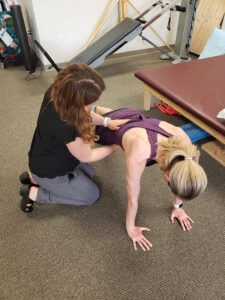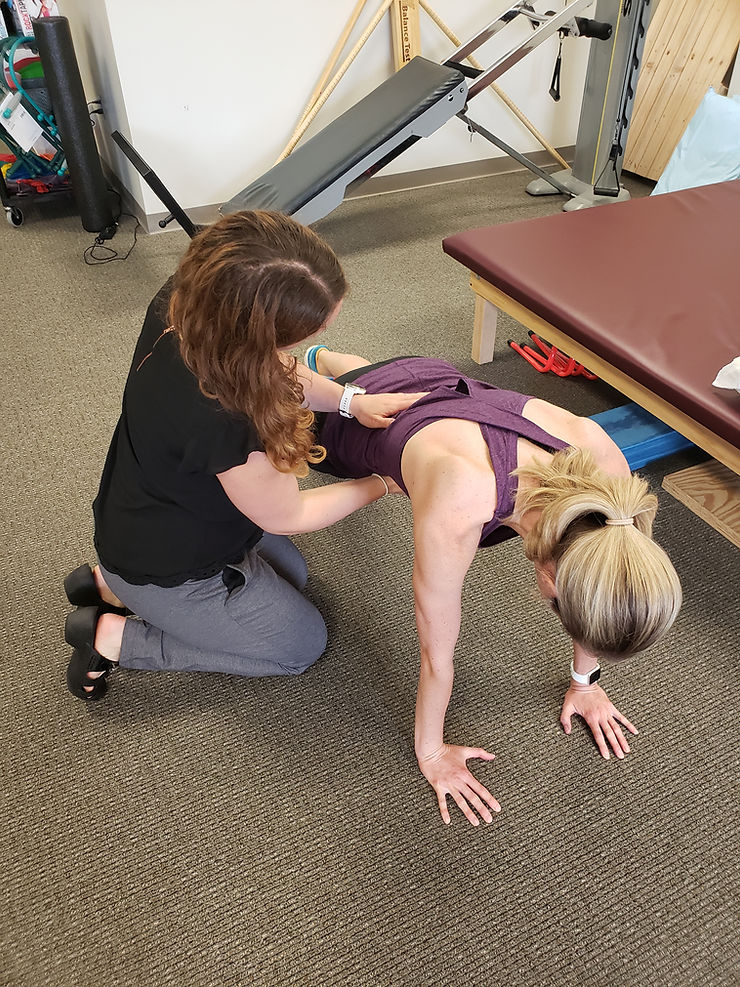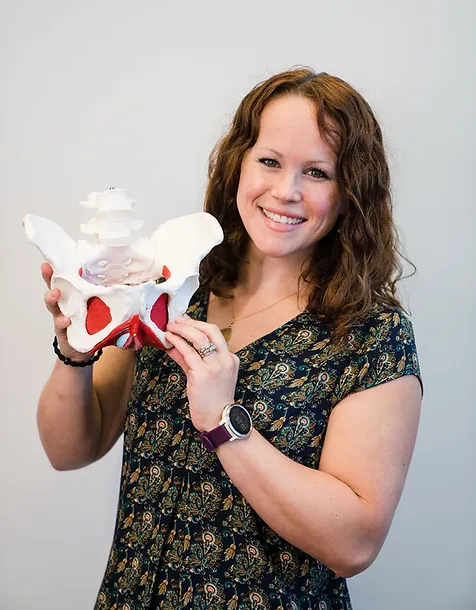Pelvic rehab is starting to become more of a “hot topic,” but many people are still unaware of this group of muscles and how they affect our everyday lives. The pelvic floor is a muscular hammock that sits in the bottom of our pelvis and helps to hold our organs up. They are present in men and women. Just like any other muscle in the body, injuries can occur, weakness can develop, or tension and trigger points can build resulting in pain and dysfunction.
Pelvic floor dysfunction can take on various presentations in different populations. One of the most common symptoms is urinary leakage. It has almost become mainstream to think it is normal to “pee a little” when you sneeze, cough, laugh, or jump. Stress incontinence is a symptom that there is a problem with the pressure system in your body. We all have a normal resting intra-abdominal (inside the abdomen) pressure and we manage this pressure during activity with proper breathing, core activation, and pelvic floor activation. If we do not have adequate awareness of these integral pieces, the system becomes imbalanced and symptoms occur. Another common, yet incorrect, belief is that kegels are the answer to pelvic floor problems. Women are instructed to perform kegels all day to strengthen the pelvic floor. As stated previously, the pelvic floor is a group of muscles, just like other muscles in our body. We would not walk around all day performing bicep curls if we had a problem with our arm! Symptoms could be a sign of weakness OR a sign of excessive tension or tightness in the system. Due to this discrepancy, it is of upmost importance to go see a pelvic PT and get an assessment, so you know exactly what the problem is and how to fix it!
Common populations where pelvic dysfunction occur are in pre and post-partum women and the elderly, but ANYONE can experience these problems. Many athletes, even elite men and women will encounter leakage (urinary or fecal) with their specific activity. Getting instruction by a physical therapist on proper breathing mechanics and muscle coordination during activity is a great way to keep healthy pressures in your system to prevent problems while exercising.
After pregnancy and delivery, a woman attends a 6-8-week post-partum follow-up appointment with an OBGYN to assess healing and be released for return to activity. This is a great time to talk with your OBGYN about getting a referral to see a physical therapist to help you ease back into exercise safely. During pregnancy there is a lot of shifting and stretching of muscles that could potentially lead to discoordination and problems on return to exercise. You may have developed some diastasis recti (abdominal separation). During the birthing process, tearing can occur that can lead to restrictive and painful scarring. A physical therapist can assess the extent of the diastasis recti, strength and coordination of the core and pelvic floor, and help develop strategies to improve posture and alignment so that safe and optimum return to activity can be achieved..
Pelvic floor dysfunction also presents itself in the form of pain. Some women experience pain with intercourse, inserting a tampon, or during an internal medical exam. This pain and tension can be a result of hormone imbalances, scar tissue, muscle tension or weakness, or impaired posture This is a real problem that a physical therapist can address and help improve so you can feel better!
Pelvic floor dysfunction is a real diagnosis with many treatments available. You have a voice! You don’t need to live another day with pain or incontinence. We need to remove the normalcy that has been labeled to these issues and empower each other to get help and feel better. We need to eliminate the shame and embarrassment and open-up the lines of communication between patients and physicians. We have to take care of our bodies and be our own advocate. A physical therapist can help. I am here for you!
~Dr. Steph



